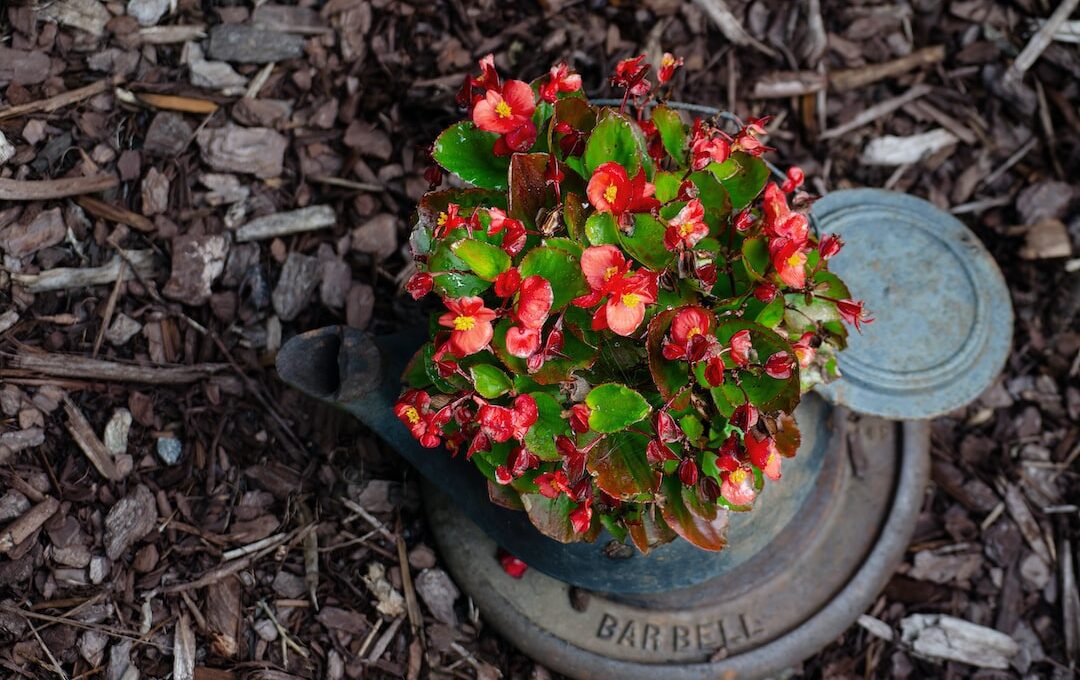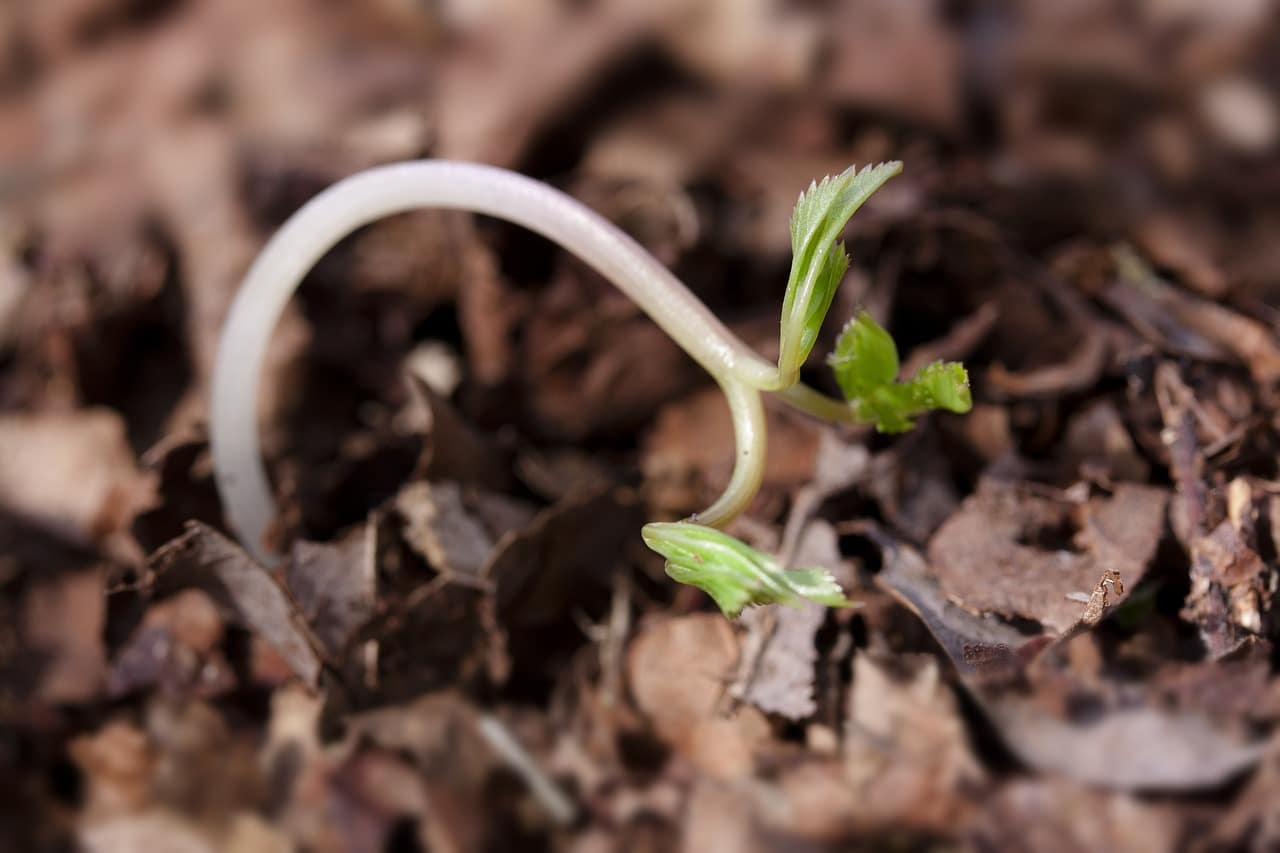Do you love the vibrant colors and delicate blooms of potted begonias? If so, you may be wondering how long these beautiful plants will last in your care. The lifespan of potted begonias can vary depending on several factors, but with proper care and maintenance, you can extend their longevity.
In this article, we will explore the different types of potted begonias and provide you with tips on how to best care for them. We will also discuss signs of decline to watch out for and how to overwinter your begonias to ensure their survival in colder months. Additionally, we will troubleshoot common problems that may arise during your journey of growing these lovely plants.
By following our advice, you can enjoy your potted begonias for as long as possible, bringing beauty and joy to your home or garden.
Quick Summary
- Lifespan of potted begonias can vary depending on care and maintenance
- Different types of potted begonias with unique characteristics and care requirements
- Proper care essential for longevity of begonias
- Adequate light, temperature, watering, and pest control important for healthy begonias
Types of Potted Begonias
You’ll be amazed by the stunning variety of potted begonias available! There are numerous begonia varieties to choose from, each with its own unique characteristics and care requirements. Whether you’re a beginner or an experienced gardener, there’s a begonia that’ll suit your needs.
One popular type of potted begonia is the Rex begonia. It’s known for its vibrant, multicolored leaves that come in a range of patterns and textures. To care for a Rex begonia, make sure it’s placed in a well-draining potting mix and water it regularly, but avoid overwatering.
Another common variety is the Angel Wing begonia. This begonia has long, arching stems with glossy, green leaves that have silver markings. It produces clusters of delicate flowers that add a touch of elegance to any space. To keep an Angel Wing begonia healthy, place it in a location with bright, indirect light and water it when the top inch of soil feels dry.
No matter which begonia variety you choose, proper care is essential for their longevity. Provide them with the right amount of light, water, and fertilizer, and they can last for several years. With their stunning colors and unique foliage, potted begonias are a great addition to any indoor or outdoor space.
Proper Care and Maintenance
To properly care for and maintain your potted begonias, there are a few key points to keep in mind.
First, you’ll want to make sure you’re watering them correctly and providing them with the right soil requirements.
Additionally, it’s important to provide adequate light and temperature conditions for your begonias.
Finally, regularly fertilizing and pruning them will help keep them healthy and thriving.
Watering and Soil Requirements
Potted begonias thrive when they receive regular watering and are planted in well-draining soil. To ensure the health and longevity of your begonias, here are some important tips to follow:
-
Watering frequency: Begonias prefer moist soil but can be sensitive to overwatering. It’s best to water them when the top inch of soil feels dry to the touch. Avoid letting the soil become waterlogged, as this can lead to root rot.
-
Pot size: Choose a pot that’s slightly larger than the root ball of your begonia. This’ll allow room for growth without drowning the plant in excessive soil moisture.
-
Use well-draining soil: Begonias require soil that drains well to prevent water accumulation around the roots. A mix of peat moss, perlite, and vermiculite can provide the necessary drainage.
-
Mulch the soil: Adding a layer of organic mulch around the base of the plant can help retain moisture and regulate soil temperature.
By following these guidelines, you can ensure that your potted begonias receive the proper amount of water and soil conditions they need for a long and healthy life.
Providing Adequate Light and Temperature
Ensuring that your potted begonias receive enough light and the right temperature is essential for their overall well-being.
Adequate light is crucial for the growth and development of begonias. Place your potted begonias in a location where they can receive bright, indirect light for at least six hours a day. Avoid exposing them to direct sunlight as it can scorch their delicate leaves.
Additionally, maintaining the appropriate temperature is vital. Begonias thrive in temperatures between 65°F and 75°F during the day and slightly cooler temperatures at night. Avoid placing them near drafts or vents that can cause temperature fluctuations.
Consider using curtains or blinds to regulate the amount of light and temperature your begonias receive.
By providing adequate light and temperature control, you can ensure the longevity and well-being of your potted begonias.
Fertilizing and Pruning
Make sure you fertilize and prune your begonias regularly to promote healthy growth and beautiful blooms. Fertilizing your potted begonias is essential for providing them with the nutrients they need to thrive. Use a balanced, water-soluble fertilizer and follow the instructions on the package for proper application. Avoid over-fertilizing, as this can lead to burn and damage the roots.
Pruning your begonias is also important for maintaining their shape and encouraging new growth. Remove any dead or yellowing leaves, as well as any stems that are crossing or crowding the plant. Be sure to use clean, sharp pruning shears to prevent the spread of disease.
Regular fertilizing and pruning will help your potted begonias stay healthy and vibrant for a long time.
Extending the Lifespan
To extend the lifespan of your potted begonias, there are a few key points to consider.
First, deadheading and removing spent flowers regularly will encourage new growth and prevent the plant from expending energy on producing seeds.
Second, preventing pest and disease infestations through proper care and regular inspections will help keep your begonias healthy.
Lastly, protecting your begonias from harsh weather conditions, such as extreme heat, cold, or strong winds, will help them thrive and last longer.
Deadheading and Removing Spent Flowers
Keep an eye out for faded blooms on your potted begonias, as removing them not only improves the overall appearance of the plant, but also encourages continuous blooming throughout the season. Deadheading benefits your begonias in several ways:
- Prevents seed production: By removing spent flowers, you prevent the plant from putting energy into producing seeds. This allows it to redirect its resources towards producing new blooms.
- Promotes growth: Deadheading stimulates the growth of new flowers by signaling to the plant that it needs to produce more blooms to replace the ones that were removed.
To ensure the safety of your plant while deadheading, follow these guidelines:
- Use clean and sharp pruning shears to make clean cuts without damaging the plant.
- Deadhead when the flowers start to fade and before they develop seed pods.
- Wear gloves to protect your hands from any thorns or prickles on the plant.
By deadheading your potted begonias at the right time and in the right way, you can extend their lifespan and enjoy a vibrant display of blooms throughout the season.
Preventing Pest and Disease Infestations
Now that you know how to deadhead and remove spent flowers from your potted begonias, let’s move on to the next step in keeping them healthy and thriving. Preventing pests and disease infestations is crucial to ensuring the longevity of your begonias. By taking proactive measures, you can keep these unwanted invaders at bay. Regularly inspect your plants for any signs of pests such as aphids, mealybugs, or spider mites. If you spot any, remove them immediately and treat the affected area with a mild insecticidal soap. Additionally, practice good hygiene by keeping the area around your begonias clean and free from debris, as this can attract pests. Lastly, make sure your begonias are well-watered and receive adequate sunlight, as healthy plants are less susceptible to diseases. Remember, prevention is key when it comes to pest and disease control.
| Pest Prevention Tips | Disease Control Tips | General Tips | ||
|---|---|---|---|---|
| Inspect plants regularly for pests | Provide adequate air circulation | Keep the area clean and free from debris | ||
| Remove pests immediately | Avoid overwatering | Water plants properly | ||
| Treat affected areas with insecticidal soap | Avoid excessive fertilization | Provide proper sunlight | ||
| Keep the area clean and free from debris | Dispose of infected plants properly | Practice good hygiene | ||
| Practice good hygiene | Encourage beneficial insects | Monitor plants regularly | Remove and destroy infected plants to prevent the spread of pests and diseases. |
Protecting Begonias from Harsh Weather
With a little extra care, your begonias can weather any storm and remain vibrant and healthy. Protecting begonias from harsh weather, especially frost, is crucial to their survival. Here are some tips to keep your begonias safe during the winter months:
- Bring your potted begonias indoors when the temperature drops below 50°F (10°C).
- Find a sunny spot for them near a window to ensure they receive enough light.
- Place a protective cover or blanket over the plants at night to shield them from cold drafts.
- Water your begonias sparingly during winter to avoid root rot.
By following these simple steps, you can ensure that your begonias stay protected from frost and thrive throughout the winter season. Remember, a little precaution goes a long way in maintaining the health and beauty of your beloved plants. Stay safe and enjoy the beauty of your potted begonias all year round!
Signs of Decline
Take a moment to observe your potted begonias closely, for they might reveal subtle signs of decline that you wouldn’t want to miss. As a responsible plant owner, it’s crucial to be aware of warning signs that indicate your begonias aren’t thriving.
By recognizing these signs early on, you can take immediate action to prolong the lifespan of your precious plants.
One of the first warning signs to look out for is wilting leaves. If you notice your begonia’s leaves drooping or becoming discolored, it could be a sign of insufficient water or excessive sun exposure. Adjusting the watering schedule or relocating the plant to a shadier spot can help prevent further decline.
Another indicator of decline is the presence of pests. Keep an eye out for tiny insects, such as aphids or spider mites, as they can quickly damage your begonias. Regularly inspect the leaves and stems for any signs of infestation and take appropriate measures to eliminate the pests.
Lastly, if your begonias start losing their vibrant colors or fail to produce flowers, it could be a sign of nutrient deficiency. Consider fertilizing your plants with a balanced, water-soluble fertilizer to provide the necessary nutrients for healthy growth.
Remember, being attentive to these warning signs and taking prompt action can greatly extend the lifespan of your potted begonias. Keep a watchful eye on your plants, and they’ll reward you with their beauty for years to come.
Are Potted Geraniums and Potted Begonias Similar in Lifespan?
The potted geranium lifespan may vary depending on various factors, including care, environment, and genetics. Similarly, the potted begonias also have unique lifespan considerations. However, both plants can thrive for several years if provided with proper maintenance, such as adequate sunlight, water, and nutrient-rich soil.
Overwintering Potted Begonias
Ensure the vibrant beauty of your potted begonias endures through the winter months by learning how to properly overwinter them. Here are four essential overwintering techniques to keep your begonias safe and healthy:
-
Bring them indoors: As temperatures drop, it’s crucial to move your potted begonias indoors to protect them from frost and freezing temperatures. Find a cool, well-lit area like a basement or a garage with a window.
-
Reduce watering: Begonias go into a dormant state during winter, so they require less water. Overwatering can lead to root rot and other diseases. Water them sparingly, allowing the soil to dry out between waterings.
-
Provide adequate light: Place your begonias near a window where they can receive bright, indirect light. Alternatively, you can use grow lights to supplement natural light.
-
Avoid common mistakes: Some common mistakes to avoid during overwintering include placing begonias near drafts or heating vents, using cold water for watering, and neglecting to check for pests regularly.
By following these overwintering techniques and avoiding common mistakes, you can ensure the longevity of your potted begonias and enjoy their vibrant beauty for many years to come. Stay safe and happy gardening!
Troubleshooting Common Problems
Now that you have learned about overwintering potted begonias, let’s dive into troubleshooting common problems that you may encounter while caring for these beautiful plants. It’s important to identify nutrient deficiencies early on to ensure the health and longevity of your begonias.
To help you quickly identify and address any issues, I have prepared a handy table below:
| Problem | Symptoms | Solution |
|---|---|---|
| Nutrient Deficiency | Yellowing or browning leaves, stunted growth | Adjust fertilizer application or use a balanced fertilizer |
| Overwatering | Wilting, yellowing leaves, root rot | Allow the soil to dry out between waterings |
| Pests | Holes in leaves, sticky residue | Use organic insecticides or manually remove pests |
By regularly inspecting your begonias for these common problems, you can take swift action to keep them healthy and vibrant. Remember to always follow safety guidelines when handling pesticides and use organic options whenever possible.
Taking the time to troubleshoot and address common issues will greatly extend the lifespan of your potted begonias, allowing you to enjoy their beauty for years to come.
Frequently Asked Questions
Can potted begonias be planted directly in the ground?
Yes, potted begonias can be safely planted directly in the ground. This planting method offers several benefits, such as providing more room for growth and allowing the plants to establish stronger root systems.
How often should potted begonias be watered?
To care for potted begonias during winter, water them when the top inch of soil feels dry. Be cautious not to overwater, as this can lead to root rot. Ensuring proper drainage is essential.
Can potted begonias be grown indoors?
Yes, potted begonias can be grown indoors. Indoor begonia care involves providing them with bright, indirect light, consistent watering, and proper humidity. Growing begonias indoors has the benefits of adding beauty and purifying the air in your home.
What are some common pests that affect potted begonias?
To keep your potted begonias safe from common pests like aphids and mealybugs, it’s important to focus on prevention and treatment. These bugs can harm your plants, but with proper care, you can keep them at bay.
Can potted begonias be propagated from cuttings?
Yes, you can propagate potted begonias from cuttings. It’s a great way to create new plants and enjoy the benefits of propagating begonias. Just make sure to follow proper safety precautions when handling sharp tools and plant materials.
Conclusion
So, now you know how long potted begonias can last with proper care and maintenance. By choosing the right type of begonia for your environment and providing it with the right conditions, you can extend its lifespan.
Keep an eye out for any signs of decline, such as wilting or yellowing leaves, and take action accordingly. And don’t forget to overwinter your potted begonias if necessary.
With these tips and troubleshooting solutions, you’ll be able to enjoy your potted begonias for as long as possible.









